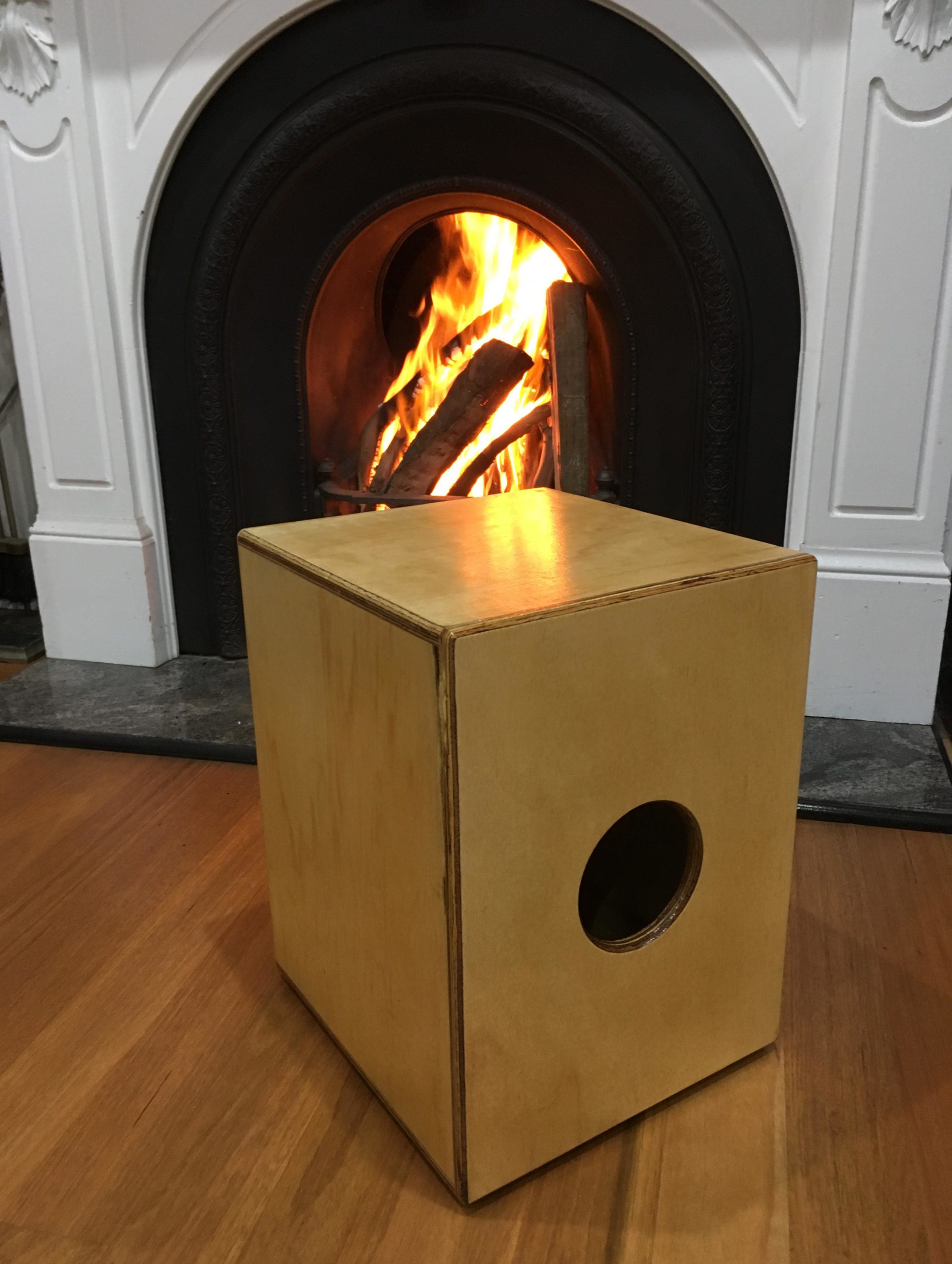A cajon is a percussion instrument, basically a wooden box drum. You sit on top of the cajon and tap the front surface. The cajon usually has a sound hole cut in the back face. The inside of the front face normally has a some form of wire snare which vibrates against the face to give a kind of rattling sound.
Cajon means “drawer” in Spanish. The plural of cajon is cajones, not to be confused with cojones which has a completely different meaning in Spanish!
History of cajones
Around the 16th Century, African slaves in Central, South and North America were not permitted to have drums because their “masters” feared that they were using beats to send messages to other slaves which might lead to an uprising. In fact, they were using drums and their profound musical talents to communicate, just as they did in Africa. They used whatever they had available to make beats – spoons, their bodies and furniture such as drawers. A more detailed (and well referenced) summary about the early history of early African American music is available at http://thisisafrica.me/lifestyle/drums-allowed-afro-rhythmic-mutations-america/.
Peru is most widely credited with the invention of the cajon due to its rapid increase in popularity in the 19th century.
